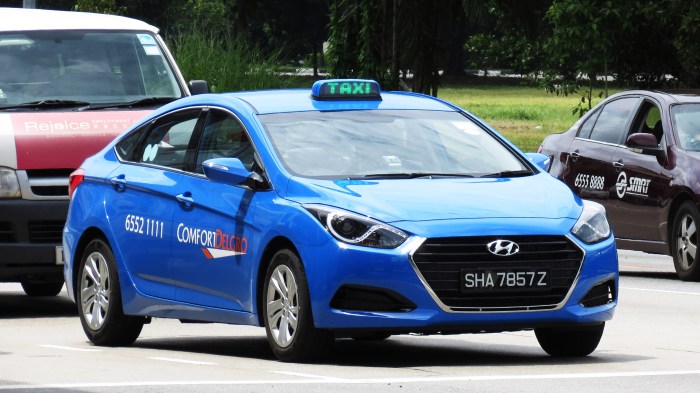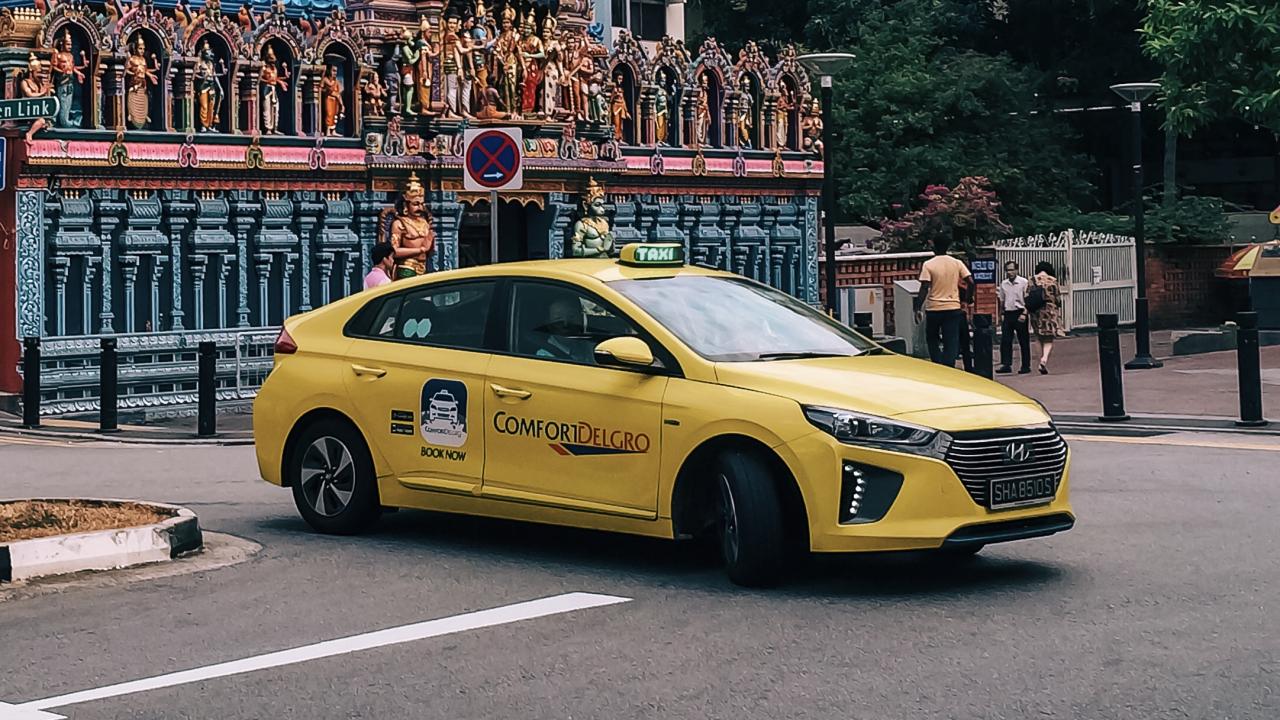Singapore’s Self-Driving Taxi Pilot Program: Worlds First Self Driving Taxis Rolled Out In Singapore
Singapore is at the forefront of autonomous vehicle technology, launching the world’s first self-driving taxi pilot program. This ambitious initiative aims to revolutionize transportation and enhance the city-state’s already efficient infrastructure.
Key Features of the Pilot Program
The pilot program features a fleet of self-driving taxis operating in designated areas within Singapore. These taxis are equipped with advanced sensors, cameras, and artificial intelligence (AI) algorithms to navigate roads, detect obstacles, and make safe driving decisions.
Technology and Provider
The self-driving taxis in Singapore’s pilot program utilize technology developed by nuTonomy, a leading autonomous vehicle company acquired by Aptiv in 2017. The company’s expertise in autonomous driving technology and extensive testing in various environments has made it a suitable partner for this groundbreaking initiative.
Designated Areas of Operation
The pilot program operates in specific areas within Singapore, strategically chosen to balance accessibility and traffic complexity. One key area is the one-north district, a bustling hub for research and development, showcasing the potential of self-driving taxis in a dynamic and technology-driven environment. Another area is the Jurong Innovation District, a burgeoning industrial and manufacturing hub, highlighting the adaptability of autonomous vehicles to diverse settings. These chosen areas offer a mix of urban and suburban environments, providing valuable data for refining the technology and optimizing its performance.
Safety Measures
Passenger and pedestrian safety are paramount in the pilot program. Each self-driving taxi is equipped with multiple layers of safety features, including:
- Redundant sensors and cameras: Providing multiple layers of perception and ensuring reliable detection of obstacles and potential hazards.
- Advanced AI algorithms: Continuously analyzing data from sensors and cameras to make safe driving decisions, including lane keeping, obstacle avoidance, and emergency braking.
- Human safety drivers: Present in the vehicles during the pilot phase to monitor the system and intervene if necessary, ensuring a safe and controlled environment.
- Geofencing technology: Restricting the operation of self-driving taxis to designated areas, minimizing potential risks and maximizing control over the environment.
These comprehensive safety measures aim to minimize potential risks and ensure a secure experience for both passengers and pedestrians.
Planned Duration and Objectives
The pilot program is expected to run for several years, providing valuable data and insights into the real-world performance of self-driving taxis. The program aims to:
- Evaluate the effectiveness of autonomous vehicle technology in a real-world setting, addressing challenges like traffic flow, weather conditions, and pedestrian behavior.
- Assess passenger acceptance and comfort with self-driving taxis, gathering feedback on user experience and identifying areas for improvement.
- Gather data on safety and reliability, analyzing performance metrics and identifying areas for further development and refinement.
- Explore potential applications and benefits of self-driving taxis, such as reduced congestion, improved accessibility, and enhanced safety.
The pilot program’s objectives aim to pave the way for a future where autonomous vehicles play a significant role in shaping the transportation landscape of Singapore and beyond.
Impact on Transportation and Society
The introduction of self-driving taxis in Singapore holds the potential to revolutionize transportation and society, impacting various aspects of our daily lives. From reducing traffic congestion to enhancing accessibility for diverse groups, the implications of this technology are far-reaching and multifaceted.
Traffic Congestion and Efficiency
Self-driving taxis have the potential to significantly reduce traffic congestion and improve efficiency on Singapore’s roads. These vehicles can communicate with each other and traffic infrastructure, allowing for optimized routes and smoother traffic flow. By eliminating human error, self-driving taxis can maintain consistent speeds and avoid sudden braking or lane changes, further contributing to efficient traffic management.
Public Perception and Acceptance
Singapore’s embrace of self-driving taxis has sparked a lively debate, with public opinion ranging from cautious optimism to outright skepticism. While the potential benefits of this technology are undeniable, concerns and anxieties about safety, job displacement, and ethical implications are also prominent. Understanding public perception and navigating these concerns are crucial for the successful implementation of self-driving taxis in Singapore.
Public Opinion on Self-Driving Taxis in Singapore
A recent survey conducted by the National University of Singapore revealed a mixed bag of public sentiment towards self-driving taxis. While a majority (65%) expressed interest in trying out this new mode of transportation, a significant minority (30%) harbored reservations. These reservations stemmed from concerns about safety, job security for taxi drivers, and the potential for misuse of this technology.
Potential Concerns and Anxieties About Self-Driving Vehicles
The adoption of self-driving taxis is not without its challenges, and public anxieties surrounding this technology are understandable.
- Safety Concerns: The public is understandably apprehensive about the safety of self-driving vehicles, particularly in complex urban environments. Questions about how these vehicles will react in unexpected situations, such as sudden lane changes or adverse weather conditions, remain a primary concern.
- Job Displacement: The potential impact on taxi driver employment is another major concern. While proponents argue that self-driving taxis will create new jobs in technology and maintenance, many drivers worry about losing their livelihoods.
- Ethical Implications: The ethical dilemmas surrounding self-driving vehicles, such as decision-making in emergency situations, are also a source of anxiety. For instance, how will a self-driving taxi prioritize passengers’ safety in a scenario where an unavoidable accident is imminent? These complex ethical questions require careful consideration and public discourse.
- Data Privacy and Security: The collection and use of personal data by self-driving vehicles raise concerns about privacy and security. Ensuring the secure storage and responsible use of this data is crucial for public trust.
Factors Influencing Public Acceptance
Public acceptance of self-driving taxis is influenced by a complex interplay of factors:
- Safety and Reliability: Public trust in the technology hinges on its proven safety and reliability. Extensive testing, robust safety protocols, and transparent communication about the technology’s capabilities are essential for building confidence.
- Accessibility and Affordability: The accessibility and affordability of self-driving taxis will play a significant role in their adoption. Making this technology available to a broad range of users, including low-income earners, is crucial for its success.
- Social and Cultural Considerations: Singapore’s unique social and cultural context must be factored into the implementation of self-driving taxis. For example, the cultural emphasis on personal service and the importance of human interaction may need to be addressed in the design and operation of these vehicles.
- Government Regulations and Public Education: Clear regulations and public education campaigns are essential for building public trust and ensuring responsible use of self-driving taxis. These campaigns should address safety concerns, explain the technology’s benefits, and promote responsible behavior by both passengers and drivers.
Strategies for Promoting Public Awareness and Trust
Building public awareness and trust in self-driving taxis requires a multifaceted approach:
- Public Demonstrations and Test Rides: Providing opportunities for the public to experience self-driving taxis firsthand through demonstrations and test rides can help to alleviate anxieties and build confidence.
- Transparent Communication: Open and transparent communication about the technology’s capabilities, limitations, and safety features is essential. Regular updates on testing results, safety protocols, and regulatory frameworks will help to build trust.
- Engaging Stakeholders: Involving stakeholders, including taxi drivers, passengers, businesses, and government agencies, in the development and implementation of self-driving taxis is crucial. This collaborative approach fosters a sense of ownership and promotes public acceptance.
- Public Education Campaigns: Comprehensive public education campaigns can address concerns, explain the benefits of self-driving taxis, and promote responsible use. These campaigns should utilize a variety of media channels, including traditional media, social media, and public forums.
Benefits and Challenges of Self-Driving Taxis for Different Stakeholders
| Stakeholder | Benefits | Challenges |
|---|---|---|
| Passengers |
|
|
| Drivers |
|
|
| Businesses |
|
|
| Government |
|
|
Future of Self-Driving Taxis
Singapore’s pioneering embrace of self-driving taxis marks a pivotal moment in the evolution of transportation. The success of this pilot program has far-reaching implications, not just for Singapore, but for cities around the world. This begs the question: What does the future hold for self-driving taxis?
Widespread Adoption of Self-Driving Taxis
The potential for widespread adoption of self-driving taxis is undeniable. The technology is rapidly advancing, and its benefits are becoming increasingly apparent. In Singapore, the success of the pilot program has demonstrated the feasibility and desirability of self-driving taxis. This success is likely to encourage other cities to explore similar initiatives. Furthermore, as the technology matures and costs decrease, self-driving taxis will become more accessible to a wider range of consumers.
Impact on Urban Planning and Infrastructure
The widespread adoption of self-driving taxis will have a profound impact on urban planning and infrastructure. Cities will need to adapt to accommodate the increasing number of autonomous vehicles on the roads. This will involve changes to traffic flow management, parking regulations, and the design of public spaces. For instance, cities may need to create dedicated lanes for self-driving vehicles, or redesign intersections to optimize traffic flow for autonomous vehicles. Furthermore, the rise of self-driving taxis could lead to a reduction in the need for personal vehicle ownership, potentially freeing up valuable urban space currently used for parking.
Predictions for the Future of Self-Driving Technology in the Transportation Industry
The future of self-driving technology in the transportation industry is bright. Experts predict that self-driving vehicles will play an increasingly prominent role in various transportation sectors, including ride-hailing, public transportation, and logistics. Self-driving trucks, for instance, are expected to revolutionize long-haul trucking, reducing costs and improving safety. In the realm of public transportation, self-driving buses and trains are likely to enhance efficiency and accessibility. These advancements are likely to lead to a more connected and sustainable transportation ecosystem.
Potential Development of Self-Driving Public Transportation Systems
The development of self-driving public transportation systems is a natural progression of the self-driving taxi revolution. Imagine a future where self-driving buses seamlessly navigate city streets, connecting passengers to various destinations. These systems could operate 24/7, providing on-demand service and reducing the need for traditional bus routes. Similarly, self-driving trains could offer increased frequency and reliability, improving the efficiency of public transportation networks. The integration of self-driving technology into public transportation systems holds immense potential to transform urban mobility.
Challenges and Opportunities for the Future of Self-Driving Taxis, Worlds first self driving taxis rolled out in singapore
The future of self-driving taxis presents both challenges and opportunities. One major challenge is ensuring public trust and acceptance. Concerns regarding safety, security, and ethical considerations need to be addressed effectively. Additionally, regulatory frameworks need to be established to govern the operation of self-driving vehicles. On the other hand, the development of self-driving taxis offers significant opportunities for economic growth and job creation. New industries and business models are likely to emerge, creating opportunities for innovation and entrepreneurship.
Worlds first self driving taxis rolled out in singapore – The rollout of self-driving taxis in Singapore represents a pivotal step towards a future where transportation is safer, more efficient, and accessible to all. While challenges remain, the potential benefits of this technology are undeniable. As the world watches, Singapore’s pioneering spirit and commitment to innovation have set the stage for a new era of mobility, one that promises to transform cities and improve lives.
Singapore’s streets are getting a futuristic makeover with the world’s first self-driving taxis hitting the road. While we’re all buzzing about autonomous vehicles, it’s hard not to remember the tech hiccups of the past, like when Verizon begun shipping Galaxy Note 7 – a phone that literally went up in flames! Thankfully, the future of self-driving taxis seems much brighter, and Singapore is leading the way.
 Standi Techno News
Standi Techno News

